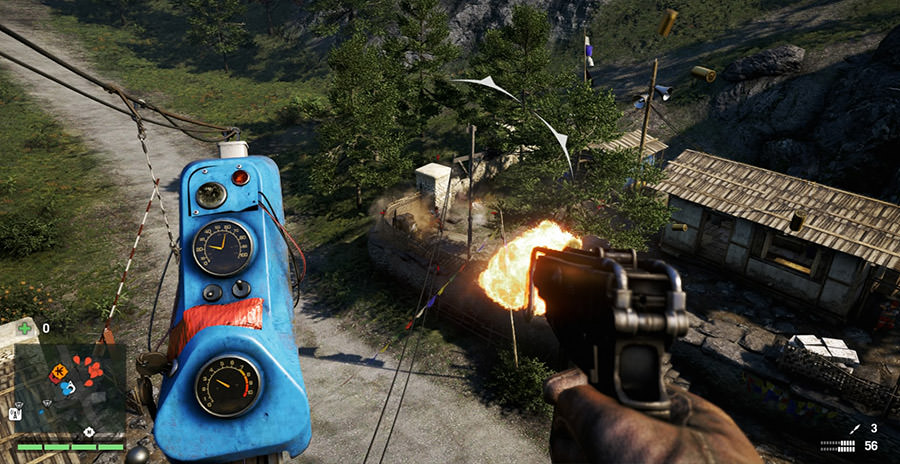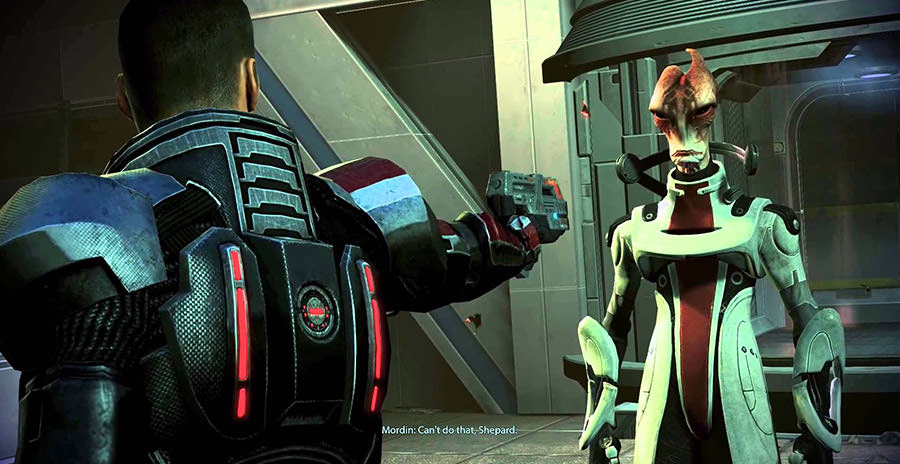
‘Flow’: What is it and how it Affects Your Game
The 51st State: “Flow”
We’ve all been there. You lose yourself completely in an activity. Time stands still. You’re laser focused. You have ‘tunnel vision’ and can see your objective as clear as day. You lose track of time completely and forget to eat, or even sleep. Every ounce of your attention and focus are absorbed into the activity. You feel as though your actions have a direct impact on your success. You are strongly challenged without being overwhelmed by difficulty. You are hyper aware of every action you make, and every reaction to it. Athletes call it ‘being in the zone’.
Gamers call it Friday night.
The History of Flow
A seemingly innate human experience, it wasn’t until the 1970’s that Hungarian psychologist Mihaly Csikszentmihalyi began researching and writing about the concept that it gained prominence amongst academic thinkers. He was fascinated by how artists of all kinds would get completely lost in their work. After his breakthroughs and into the 80’s and 90’s “flow” research began to gain steam, and was more widely discussed as an important aspect in designing experiences.
Flow in Games
What relationship does the concept of flow have with games?
In many ways flow is a perfect analogy for the creative goals of game design as well as the experiential goals of players.
As game makers we want players to be completely absorbed by the experiences we create. We want them to feel in control of their actions, make meaningful decisions, and feel like they are at the center of the outcome. We define well-balanced difficulty by a challenge, but one which players can overcome and feel proud to have accomplished something.
As players, we define a great game; no matter the genre, style or platform, by feeling like we can get completely lost in the experience the game provides. We use words like ‘immersive’, and ‘addictive’ (‘addicting’ if you’re less than 25… when did that change?) to essentially describe the optimal flow experience. We are constantly searching for this experience in the game we are playing, or we are looking elsewhere to fulfill our needs.
The Importance of Stories
Achieving all these things (or at least some of them) creates a wealth of stories for the player. Stories create memorable, lasting connections between them and the game. Stories that make them come back and play the game again and again. Stories that enrich their experience and contribute to a strong flow state.
Your Own Private ‘Ida’-Flow
The flow experience is deeply personal. There cannot be a single recipe for success because our personality, preferences and even life experience all greatly impact the ideas and mechanics required for us to achieve it. Even our mood, or whether we’re preoccupied with thoughts of disappointment over Episode 1 (still) have a massive effect on whether we can achieve a flow state at that moment. Some players love League of Legends, others wouldn’t be caught dead playing it.
Solid 3C’s
That being said, there are some fundamental things you should focus on as a baseline experience.
Firstly, your game’s 3C’s have to be incredibly solid. What I’m referring to here are the Characters, Controls, and Camera. How does it feel to control your character? Are the animations solid? Do they sell the experience? Does jumping feel natural and smooth? Can you customize your controls? How does it feel to move the camera around? Are the actions on the buttons responsive? Are they layed out on the controller properly?

The Far Cry series is widely respected for excellent 3C’s
The key here is to make the player believe the experience, feel completely in control and be able to perform all of the low-level mechanics and actions in your game with ease.
Even if you are making a game without characters; a Civilization like turn-based strategy game for example, your version of the 3C’s are still of paramount importance. Does the camera jitter when the player pans around the world using their mouse? Is it a chore to check on the Italian territories’ wheat production? Do you have to click 7 times to accept alliances between a neighboring nation?
Each element of frustration in these areas, however small, creates static between your player and their flow state with your game. I can’t emphasize this enough.
Difficulty
The challenge level of your game also plays an important role in getting players into their flow state. If it’s too easy, they will breeze through it and their mind will start to wander. Too difficult and they may have to replay sections over and over, boring or frustrating them. Some games have created a dynamic difficulty system which attempts to modulate the challenge based on how the player is currently performing. The ‘AI director’ from the Left 4 Dead series is a good example. If done correctly, it can prove to be an excellent asset in achieving flow. If not, simply balancing your game well for as many players as possible, and perhaps giving them difficulty control options allows for a wide range of player abilities and contributes to more overall flow.
Freedom of Choice
No matter the type of game you are making, giving players personal agency pays dividends deposited directly into your flow account. This can be seen in everything from the multitude of meaningful narrative choices that impact the game’s plot in the Mass Effect series, to the micro decisions of attack, counter or gadget deployment from the Batman Arkham series. It really runs the gamut from large, game modifying choices, to second-to-second gameplay options.
The important thing to remember is that you must create meaningful choice – however big or small, to support your achievement of a flow state. Does the player feel the weight of their decision to cure the genophage in Mass Effect 3? Did they agonize over what to do at the moment of their decision? Will they be thinking about it when the fall asleep that night? Will they feel empowered in the moment when they countered a knife attacking enemy, followed it up with a perfect critical strike and finished off the final enemy with batclaw pull into a clothesline attack? Both very high level narrative choices and extremely low level mechanics can work towards your goals. Neither is better and neither will necessarily help or hurt your game. It all depends on execution.
The scope of your design decisions, and how they work out for your players must be dictated by your game. Who is your target audience? What do they want from their game experience? What is the scope of what you can truly polish? The particular set of circumstances in your game should control how you embody flow through your take on agency and choice.

The Mass Effect series contains many pivotal moments for player choice
Player Goals Need to be Clear
It’s important for players to be able to visualize their success through your game. Goals on all levels – short, medium, and long term need to be clear and easily understandable. Without this, flow becomes a very difficult prospect. For example, if your title features character progression using a skill tree, players need to be able to plan their path through this system. How do they earn spendable skill points? What are the choices they have for the next skills to purchase? Can they project what their final skills will be and how long it will take for them to get there?
Focus on making plain and clear what they need to do to achieve their desired skills. The UI needs to be obvious and the upgrade path clear. The muddier this is the more they will feel out of flow and tire of the system. Even if your game doesn’t feature elements like this, clarity of the player’s progression is very important. Nothing ruins flow like a player saying “I don’t get it, what do i have to do next?”
Call the Orkin Man
This seems obvious but it should be repeated: don’t ship your game with bugs. The more bugs, and the bigger they are, the more you are risking everything in regards to flow. There is no way your players can achieve a flow state if their game is crashing every 10 minutes, or if they are falling through the world on a regular basis. Every game ships with some bugs, but try to minimize the big, annoying ones as much as possible.
Everyone is Different
As explained above, there are as many ways of achieving flow as there are gamers. You can’t guarantee a possible flow state, but you can do everything in your power to make it possible for as many players as you can. Focus on great 3C’s, ‘just right’ difficulty, personal agency, clarity of objectives, while minimizing bugs and other annoyances for your best chance at success.
Go back to Home – all Blogs – all Podcasts

